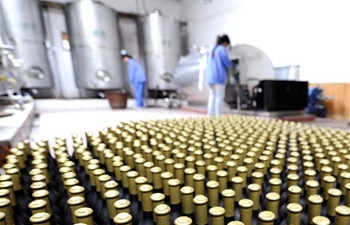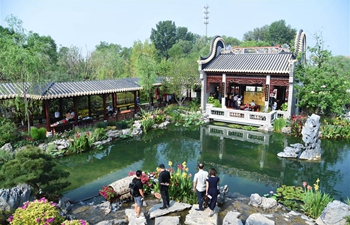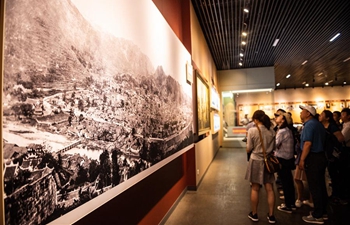GUIYANG, July 14 (Xinhua) -- A completion ceremony for a new "Red Army Bridge" was hosted this week amid a cheerful tutti of gongs and drums in a small village in Liping County of southwest China's Guizhou Province.
Shangshaozhai Village, with hundreds of years of history, was once separated from the outside world by a raging river. The only way leading outward was by boat.
Everything changed however in December 1934, when the passing-by Red Army built a wooden bridge together with local villagers.
From October 1934 to October 1936, the Red Army, the forerunner of the People's Liberation Army (PLA), carried out a daring military maneuver that laid the foundation for the eventual victory of the Communist Party of China.
The Red Army marched through raging rivers, snowy mountains and arid grasslands to break the Kuomintang regime's grip on the country and to continue their fight against Japanese invaders. Some of them marched as far as 12,500 km, enduring hunger, thirst and cold.
Wu Xiyan, 68, said his uncle was among the villagers who cooperated with the Red Army in building the bridge.
"They brought out all the available timber at home, and many of the villagers even volunteered to provide their bed and door boards," said Wu. "The village truly needed a bridge."
The bridge deck, one meter wide, is comprised of over 90 pieces of wooden boards. To commemorate the close relations between the Red Army and the local people, it was named "Red Army Bridge."
Over 80 years on, the bridge remained the solitary channel for more than 600 villagers to exit and enter the village. Despite careful maintenance, it struggled to deal with the strain of local traffic.
Having learned the stories behind the bridge, in September 2017, Sinopec, a major Chinese state-owned enterprise, donated 1.8 million yuan (261,400 U.S. dollars) to build a new bridge for the village.
The new bridge, 4.5 meters wide, enables cars to drive across, with a weight capacity up to 20 tons.
Also named "Red Army Bridge," the new bridge echoes its predecessor at a distance of 85 years and 50 meters.
The Red Army spirit is a treasure that the village has valued over all these years, said Wu, adding the village has done its best to preserve the old bridge over the years.
In 2012, a former Red Army member, over 90 years old, came to visit the bridge from eastern Zhejiang Province, Wu recalled.
He said the bridge looked exactly the same as what he saw in 1935, according to Wu.
"My uncle once told me the Red Army, passing by Shangshaozhai, promised that a better village would be built for us in the future," Wu said.
"Over the course of my lifetime, I have been a constant witness to the fulfillment of this serious promise," Wu said.

















